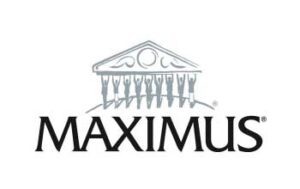One common reaction when talking to people about attrition is, “Why worry about attrition? You cannot stop it, so just hire more or give everyone raises.”
Tyranny of Change and Attrition in the Call Center
In twenty- plus years of working in tech and specifically the call center, certain trends seem to repeat themselves over and over. As a technologist, I have to admit that sometimes the reason for change gets lost in the desire to change.
What if a mosquito also had a stinger?
Fighting attrition is like swatting mosquitoes. Be careful not to focus so much on the mosquito and miss the stinger.
Henry Ford experienced massive worker attrition; what did he do?
A lot can be said about the genius behind Henry Ford and his massive innovations and inventions. He probably would not have had that hard time of a time understanding the modern call center and agent retention. An example from the growth of Ford Motor company illustrates this. Henry Ford had a singular goal, he was driven to drive the cost of his vehicle, the “Model T”, lower and lower- “to make a car for the average man.” His efforts to do this produced the first moving assembly line. By compartmentalizing the “Model T assembly,” he took the overall cost from $850 in 1908 to less than $300 dollars in 1925.
Why is Managing Call Center Attrition like “The Witcher”?
Have you had a chance to see “The Witcher” season 1 or 2? It is a medieval fantasy series on Netflix. It has proven to be a top-rated series pitting good against evil or, more often, evil vs. evil. In binge-watching season 2, I started thinking about what lessons could be gleaned from this show relating to agent retention…
“What do you do for a living?”
Whenever I go to some social interaction (back when I could go to a social interaction), people I know or just met inevitably ask what I do and what AnswerOn does.
Boomerangs come back; will agent attrition?
Higher success at curbing churn hinges on being able to proactively keep agents from leaving. Trying to change an agent’s mind once they have already decided to leave is not only painfully frustrating, but also statistically unsuccessful. You need the tools to step in and address agent concerns or issues BEFORE they have even reached the thought of leaving your organization.
The Power of a Virtual Focus Group
In business, we often talk about addressing customer “pain-points” to maximize profits. But how can you know what pain points are specific to your customer base? Surveys can help you get a feel for the general trends, but even they can miss out on crucial information. Likewise, they don’t allow you to probe further into what your customers like and don’t like. AnswerOn has generated a way to do just that.
Why are poor performing agents like a kidney stone?
Both are a pain in the side. I am a big fan of dad jokes and this one was told to me by a coworker after I had recently experienced the passing of a painful kidney stone. A couple days after my experience, I saw an article in my LinkedIn feed about the Artificial Intelligence vs Human debate that is so popular these days.
Fast Times at Ridgemont High
There has been an inordinate amount of press recently about a somewhat sketchy movie “Fast Times at Ridgemont High.” It was the quintessential 80’s movie, with everything you would expect from that genre. What you might not know is it was based on a book written by author, producer, screenwriter, Cameron Crowe, who went undercover at Ridgemont High and wrote about his experiences.









